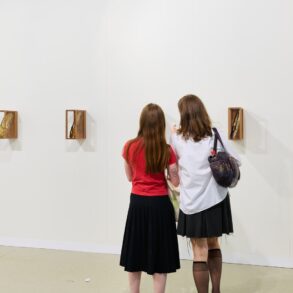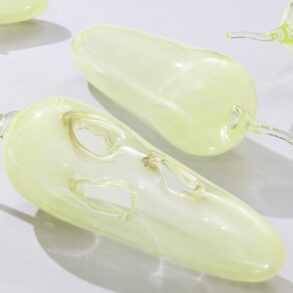
For the past five years, the Why Not Her? collective—headed up by Linda Coogan Byrne—have been digging into what tracks and artists are making it onto Irish radio stations’ heavy rotation, and compiling the data into annual reports in the hopes of levelling the playing field, tackling ingrained industry bias, and for lack of a more eloquent phrase, giving radio managers the seemingly essential kick up the behind to funnel Irish artists into their listeners’ ears.
Last year’s report found that just 3% of the top 100 tracks played on Irish radio were by Irish female artists, one of whom was Dolores O’Riordan. Irish male artists made up 15%. It also found that these Irish female artists were played most frequently during the hours of midnight and 6am, which is pretty much the graveyard shift. This is completely at odds with the global conversation, with 2023 being heralded as a landmark year for women in music thanks to the likes of Miley Cyrus, Taylor Swift, and Beyoncé dominating the charts.
The newly-released 2024 report presents a comprehensive analysis of gender and racial representation within the top 20 most popular songs by domestic Irish artists on Irish radio stations in Ireland from 1 June 1 2023, to 1 June 2024. It also highlights the top 5 songs played on each station during the twelve-month period, focusing on Irish artists exclusively and those whose music is registered on Radiomonitor.
Breaking down the stats station by station, province by province, region by region, the Why Not Her? report found that—on average—only 2% of the top 100 songs on Irish radio are by Irish female artists. These two women are Dublin DJ and artist Jazzy, and the late Dolores O’Riordan of The Cranberries. Irish male artists included in the top 100 include Dermot Kennedy, Moncrieff, and Cian Ducrot.
Commenting on the findings, Why Not Her? founder Linda Coogan Byrne says: “Despite the clear evidence of talent and success among female artists and artists of colour, they remain marginalised in airplay. We have also found that independent Irish artists, in general, face immense challenges in gaining airplay. The responsibility also lies with record labels to step up and take the same risks on women artists as they do men. Labels have a profound influence on who gets heard, and it’s crucial for them to sign and promote more diverse artists. The paradox is evident: these artists struggle to get the necessary airtime to succeed.”
“By pushing for more diverse airplay and supporting a wider range of talent, labels can lead the charge in transforming the industry into a more inclusive and equitable space. But do they want to change? Labels should not just follow trends but create them by investing in women and minority artists.
Continuing, Linda says: “It’s high time for the gatekeepers of Irish radio to acknowledge this glaring gender and racial disparity and take meaningful action towards a more equitable industry. They have had 5 years to get their act together! If the UK can do it, then we can too! We must hold radio stations accountable and demand a more inclusive and equitable platform for our diverse talent. Let’s ensure that every artist, regardless of gender or race, has the opportunity to shine.”
You can read the full report on the Why Not Her? website, which expands further on leading radio stations making progress, listenership habits, and what the statistics tell us about major labels vs. independent artists.
In the summer issue of IMAGE Magazine, we meet the women playing and working in the Irish music industry trying to change that, from advocating for change to spotlighting the breadth of Irish female musical talent. The issue is on shelves now, or you can shop your copy online today here.
This post was originally published on this site be sure to check out more of their content








